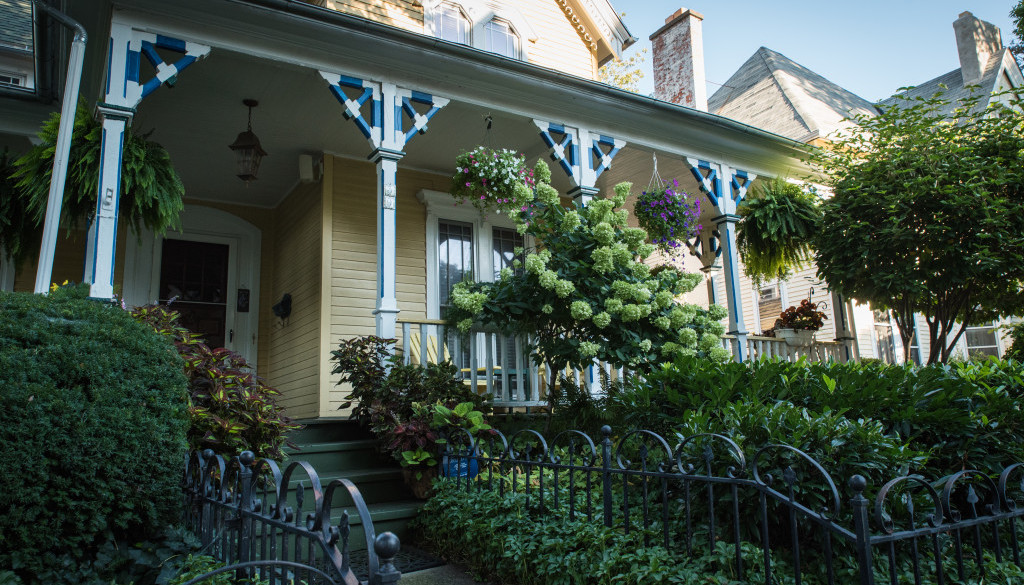The Front Porch: An Outdoor Living Room
Few architectural features have been more important in the formation of a uniquely American residential housing form than the front porch.
The front porch is a zone between the public and private, an area that is shared between the privacy of the home and the community outside. It is an area where interaction with the community can take place. Conversations with neighbors, delivery persons, sales people, petitioners, office seekers, and strangers can occur in the welcoming atmosphere offered by the shade and shelter of a porch, but apart from the more private indoor areas of the home.
The porch is also an outdoor living room, where residents can retire after the activities of a long day. Before air conditioning, and in an era marked by far more extensive and confining clothing, the porch provided a cooler alternative to the stuffy indoors. The entire family would move to the front porch after dinner. The children might play in the front yard or the friendly confines of the neighborhood, while the parents rested after the tasks of the day. Stories might be told, advice garnered, or songs sung. What the family room or rec room of post-World War II America would become, it existed first as the front porch.
Porches remain the perfect place to enjoy a cup of coffee on a sunny spring morning or a glass of wine on a warm summer evening. The City of Rochester is fortunate to have many neighborhoods built in the late 19th and early 20th century when front porches were common.
Since 1975, the zoning code has required that front porches remain open and un-enclosed. Enclosing a front porch and integrating it into the indoor living space of the house dramatically changes the character of the property. The before and after photos above illustrate how dramatic this change can be. If enough houses on a street do the same, then the character of the neighborhood is changed. The zoning code helps ensure that one of Rochester’s great assets- its residential neighborhoods- retain their character and will continue to be desirable places to live.
Adapted from Out on the Porch: An Evocation in Words and Pictures by Reynolds Price with additional writing by Jason Haremza



